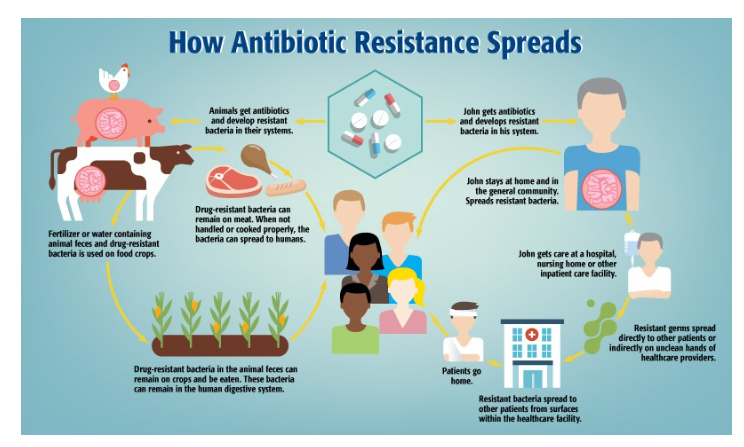Tuesday, 21st November 2023
Healthcare Sector in India - Edukemy Current Affairs
In News: By 2040, an estimated 2 million people per year are expected to be diagnosed with cancer in India, currently ranking as the third leading cause of death.
Examining the Landscape of Healthcare in India
- India's healthcare system, catering to a population exceeding 1.3 billion, is intricate, encompassing both public and private sectors.
- Government-led initiatives like "Ayushman Bharat" strive to extend health coverage to over 500 million citizens in rural areas.
- Despite notable advancements, the sector confronts persistent challenges such as inadequate funding, a shortage of healthcare professionals, and insufficient infrastructure.
- Urgent attention from both the government and private entities is crucial to address these issues and ensure widespread access to quality healthcare for Indian citizens.
Prospects for the Healthcare Sector in India
- India's healthcare sector holds significant potential, leveraging its abundant pool of well-trained medical professionals.
- The country's cost competitiveness, with surgical procedures priced at about one-tenth of those in the US or Western Europe, further enhances its attractiveness.
- India possesses key elements for substantial growth, including a large population, a robust pharmaceutical and medical supply chain, over 750 million smartphone users, and the world's third-largest startup ecosystem, facilitating access to Venture Capital Fund funding for innovative tech entrepreneurs addressing global healthcare challenges.
- The nation aims to establish approximately 50 clusters for accelerated clinical testing of medical devices, fostering product development and innovation.
- As of 2021, the healthcare sector stands as one of India's major employers, supporting 4.7 million jobs.
- Notably, it has contributed 2.7 million additional jobs between 2017 and 2022, averaging over 500,000 new jobs annually.
Challenges Linked to India's Healthcare Sector
- Insufficient Healthcare Infrastructure
- India faces a scarcity of hospitals, especially in rural areas, and many existing facilities lack essential equipment and resources.
- The National Health Profile reveals a mere 0.9 beds per 1000 people, with only 30% located in rural regions.
- Quality Care Standardization Gap
- Healthcare quality varies significantly in India, with inadequate resources in rural areas and poor regulation leading to substandard care in certain private facilities.
- Non-communicable diseases (NCDs) contribute to over 60% of all deaths, causing affordability concerns and increased vulnerability among the economically disadvantaged.
- Inadequate Mental Healthcare
- India has a notably low number of mental health professionals per capita, coupled with minimal government spending on mental health.
- This results in poor mental health outcomes and insufficient care for individuals with mental illnesses.
- Doctor-Patient Ratio Discrepancy
- A critical concern is the wide gap in the doctor-patient ratio, with India requiring 20 lakh doctors by 2030 according to the Indian Journal of Public Health.
- Presently, a doctor in government hospitals attends to approximately 11,000 patients, surpassing the WHO-recommended ratio of 1:1000.
Recent Government Endeavours in the Healthcare Domain
- The National Health Mission
- Ayushman Bharat
- Pradhan Mantri Jan Arogya Yojana (AB-PMJAY)
- National Medical Commission
- PM National Dialysis Programme
- Janani Shishu Suraksha Karyakram (JSSK)
- Rashtriya Bal Swasthya Karyakram (RBSK).
The Path Ahead
- Addressing the challenges in India's healthcare sector involves investing in infrastructure and human resources, increasing healthcare worker numbers, and enhancing accessibility for marginalized communities.
- Improvement in mental health services, tackling root causes of health inequities, sustainable health governance, cybersecurity measures, tax reductions for research and essential drugs, and adopting a "One Health" approach are essential components for a comprehensive solution.
Source: TH
India-Australia Relations - Edukemy Current Affairs
In News: During a recent visit to Delhi for the 2+2 and framework dialogue, Australian Foreign Minister emphasizes that the bilateral relationship holds significant importance.
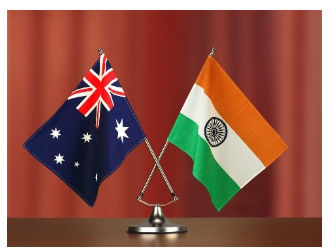
How have things been between India and Australia?
- India and Australia's diplomatic ties
- Established in 1941, have evolved from historical challenges, such as the condemnation of India's nuclear tests in 1998, to strengthened relations marked by a uranium supply deal in 2014.
- The Comprehensive Strategic Partnership, initiated in 2020, reflects the depth of the relationship.
- People-to-people connections are robust, with India being a significant source of skilled immigrants to Australia.
- Strategic and defence ties
- Have seen significant developments, including the elevation to a Comprehensive Strategic Partnership and joint military exercises like the "Malabar" exercises.
- Both countries share concerns about the China factor, with strained Australia-China ties influencing regional dynamics.
- Their participation in Quad and other multilateral forums underscores their commitment to a rules-based international order and regional integration.
- Economic cooperation
- Highlighted by the Economic Cooperation Trade Agreement (ECTA), has resulted in a reduction of duties, boosting bilateral trade.
- Additionally, the Supply Chain Resilience Initiative (SCRI) involves India and Australia partnering with Japan to enhance supply chain resilience in the Indo-Pacific Region.
- Collaboration extends beyond trade to education, with the Mechanism for Mutual Recognition of Educational Qualifications facilitating student mobility.
- Clean energy cooperation and commitments to critical minerals investment further deepen bilateral engagement.
Major Issues in India-Australian Relations
- Controversy Surrounding Adani Coal Mine
- The Adani coal mine project in Australia sparked controversy, leading to protests by activists and causing tension in the relationship between the two nations.
- Visa Concerns
- Issues have arisen regarding visa restrictions affecting Indian students and professionals seeking employment opportunities in Australia.
- Violence Against Indian Diaspora
- Recent attacks on the Indian Diaspora and temples by Khalistan supporters have become a source of strain in the relationship.
Conclusion
- In recent years, the ties between India and Australia have grown stronger, driven by shared values, interests, geography, and common objectives.
- Both nations aspire to foster a free, open, inclusive, and rules-based Indo-Pacific region, emphasizing the avoidance of unilateral or coercive actions in conflict resolution.
- The revitalized relationship, exemplified by initiatives like the India-Australia bilateral Summits, presents an opportunity to enhance the bond between the two countries and actively contribute to upholding a rule-based order in the Indo-Pacific.
|
UPSC Previous Year Questions Prelims (2018) Q. Consider the following countries:
Q. Which of the above are among the ‘free-trade partners’ of ASEAN? (a) 1, 2, 4 and 5 Ans: (c)
|
Source: TH
Draft National Pharmacy Commission Bill
In News: The Health Ministry unveils the preliminary version of the National Pharmacy Commission Bill.
Introduction of the Bill
- The National Pharmacy Commission Bill 2023 aims to replace the Pharmacy Act 1948 and the existing Pharmacy Council of India (PCI) with the National Pharmacy Commission.
- The revision is deemed necessary to enhance the regulation of the pharmacy profession and practice.
Objectives of the Bill
- The primary objective of the bill is to improve access to affordable and high-quality pharmacy education while ensuring the availability of pharmacy professionals across the nation.
- The focus is on promoting equitable healthcare by making pharmacy services accessible to all citizens.
Salient Provisions of the Bill
- National Pharmacy Commission Establishment
- The bill proposes the establishment of a commission headquartered in New Delhi.
- The Commission will comprise a chairperson, 13 ex-officio members, and 14 part-time members.
- Constitution of Three Boards
- The Central Government will constitute three boards under the commission- the Pharmacy Education Board, the Pharmacy Assessment and Rating Board, and the Pharmacy Ethics and Registration Board.
- Regulation of New Pharmacy Institutions
- The bill prohibits the establishment of new pharmacy institutions or courses without prior permission from the Pharmacy Assessment and Rating Board.
- Non-compliance may result in actions such as warnings, penalties, reduced intake, admissions suspension, or recognition withdrawal.
- National Pharmacy Register
- The Pharmacy Ethics and Registration Board will maintain a National Pharmacy Register, ensuring transparency in the details of pharmacy professionals.
- State Pharmacy Chapters
- Every State Government is mandated to constitute a state pharmacy chapter within one year, facilitating powers and duties as laid down by the Act.
- Periodic and Transparent Assessment
- The bill calls for periodic and transparent assessments of pharmacy institutions.
- Functions of the National Pharmacy Commission
- The commission is tasked with setting education standards, facilities, assessments, training, research, and tuition fees.
- It will regulate pharmacy education, training policies, institutions, research activities, professionals, and associates.
- The commission will ensure the competency of pharmacy professionals through evaluations, promoting global mobility, and collaboration with industry for technological advancements.
Conclusion
The proposed National Pharmacy Commission Bill 2023 is comprehensive, aiming to bring about positive transformations in the regulation and standards of the pharmacy profession in India.
Source: TH
China-Myanmar Economic Corridor (CMEC)
In News: The Special Envoy of China informed the President of Sri Lanka that there is a "priority" to extend the China-Myanmar Economic Corridor (CMEC) to Sri Lanka.
About China-Myanmar Economic Corridor (CMEC)

- It seeks to enhance connectivity between China's southwestern Yunnan province and the eastern Indian Ocean.
- Similar to the China-Pakistan Economic Corridor (CPEC) linking Xinjiang to Karachi and Gwadar, the China-Myanmar Economic Corridor (CMEC) stretching to the Bay of Bengal is shaping the evolving economic landscape on India's eastern side.
- Additionally, the China-Nepal Economic Corridor (CNEC), introduced by Xi Jinping during his Nepal visit last year, establishes a link from Tibet to Nepal, extending toward the Gangetic plain.
- Together, these three corridors underscore China's economic ascent and its significant impact on the Indian subcontinent and its adjacent regions.
The significance of China's partnership for Myanmar
- The significance of China's partnership for Myanmar lies in Naypyidaw's attraction to a stronger alliance with Beijing amid strained relations with the West.
- However, as Myanmar approaches upcoming elections, its leadership is mindful of potential criticism of Chinese projects, having negotiated hard on the terms of economic engagement.
- China asserts that some Belt and Road Initiative (BRI) projects can address the Rohingya conflict and boost development in the conflict-prone northern frontiers.
Impact of China-Myanmar relations on India
- As China's economic partnership with Myanmar undergoes various complexities, Delhi should acknowledge its trajectory toward increased interdependence.
- With China's growing economic interests in the Bay of Bengal, there is a corresponding political imperative for Beijing to secure them through enhanced maritime presence and naval engagement.
- As the Bay of Bengal transforms into a potential contested zone, the surrounding nations have a shared interest in establishing a regional order that fosters cooperation and minimizes conflict.
- Rather than positioning itself in direct competition with Beijing in Myanmar, Delhi should concentrate on making more effective contributions to Myanmar's development and security.
- India must prioritize the swift completion of its infrastructure projects in Myanmar and formulate a new strategy for commercial collaboration with Naypyidaw aligned with India's capacities and strengths.
- Due to resource constraints, Delhi should strengthen collaborations with like-minded partners such as Japan, which has a growing economic presence in Myanmar.
- Additionally, reviving discussions on the BCIM corridor involving Bangladesh, China, India, and Myanmar is crucial.
- Despite India rejecting China's Belt and Road Initiative (BRI), there is room for cooperation on the BCIM corridor without sovereignty concerns.
- While negotiating the terms of collaboration, India should recognize that Beijing's actions align with historical logic based on geographic proximity between southwestern China, the eastern subcontinent, and Myanmar, reminiscent of the Southern Silk Road from centuries ago.
Source: TH
Indian Reserve Battalion (IRB)
In News: Two individuals belonging to the Kuki-Zomi community, including one who was a member of the Indian Reserve Battalion (IRB), lost their lives in Manipur.
About Indian Reserve Battalion (IRB)
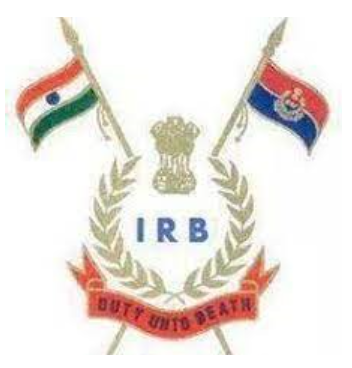
- The Indian Reserve Battalion (IRB) constitutes an elite unit specialized in handling specific situations, functioning as an Armed Police Force authorized for deployment to States and Union Territories.
- In a noteworthy development, the Home Ministry has formulated plans to establish an exclusively female IRB in Jammu and Kashmir.
- This decision comes in response to recent incidents where female students in Srinagar were observed throwing stones at security forces.
- The primary objective behind the creation of IRBs is to generate employment opportunities for local youths, with a notable provision reserving 60% of vacancies for candidates from border districts.
- While IRB personnel are typically stationed within their respective states, they can also be deployed elsewhere as deemed necessary for various security situations.
Source: IE
Jamdani Sarees - Edukemy Current Affairs
In News: At the trade fair, crowds of visitors gather around international booths showcasing dry fruits and Jamdani sarees.
About Jamdani Sarees

- Jamdani, a delicate muslin fabric, is prominently crafted in South Rupshi, located in Bangladesh's Narayanganj district near the Shitalakhwa River.
- Historical jamdani production garnered support through imperial warrants from the Mughal emperors and is a traditional artistry carried out by artisans on handlooms.
- The Mughal empire thrived on the production of Jamdani, with Jamdani sarees gaining global recognition.
- However, due to its intricate handcrafted process, involving labour-intensive efforts, the production cost of Jamdani is relatively high.
- The art of creating fine "Parsi Gara" on the loom is synonymous with jamdani, employing a discontinuous weft weaving technique where artisans manually weave denser threads into the fine warp threads to incorporate motifs into the fabric.
- Initially crafted in Dhaka using only cotton, the early Jamdani sarees boasted luxurious, lightweight, and soft characteristics, with the fabric's quality improving with finer weaves.
- While traditional Jamdani is still produced today, it has evolved to include variations made from pure silk or a cotton-silk blend.
- Although renowned for its use in sarees, Jamdani is also employed for scarves and handkerchiefs.
- Believed to be a fusion of muslin techniques by Bengali Muslims from the 14th century and ancient Bengali cloth-making methods dating back possibly 2,000 years, Jamdani is considered the most expensive product woven on Dhaka looms due to its intricate and time-consuming craftsmanship.
- Legend has it that Jamdani patterns, predating written history by thousands of years, predominantly feature geometric, botanical, and floral designs.
- In its early history, only aristocrats and royal families could afford such luxuries due to the meticulous and exquisite methodology involved in its creation.
Source: TH
Javier Milei Wins Argentina Election
In News: An outsider named Javier Milei caused a big surprise by winning Argentina's presidential election.
About Argentina
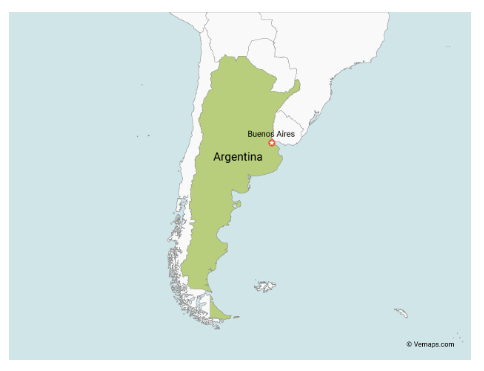
- Argentina, the second-largest country in South America following Brazil, is situated with the Andes Mountains and Chile to its western border.
- East of the Andes lies the Pampas, a flat and fertile grassland that characterizes the country's interior.
- The eastern frontier of Argentina is marked by the expansive Atlantic Ocean.
- Further neighbouring nations include Bolivia to the northwest and Paraguay to the north.
- Known for its diverse geography, Argentina encompasses varied landscapes, including the iconic Pampas, the mountainous Andes region, and a vast coastline along the Atlantic.
- The country is renowned for its rich cultural heritage, vibrant cities like Buenos Aires, and its significant contributions to literature, arts, and sports.
Source: TH
Subsidies - Edukemy Current Affairs
In News: India is expected to witness a rise in spending on subsidies and rural employment schemes preceding upcoming elections, potentially affecting public capital expenditure
About Subsidies
- Subsidies are financial assistance or support provided by the government or a public entity to certain individuals, businesses, or sectors of the economy.
- The purpose of subsidies is to encourage specific activities, promote economic development, or address social and environmental objectives.
- Subsidies can take various forms, including direct cash payments, reduced taxes, favourable loans, price supports, or other financial incentives.
Rationale for Subsidies
- Farm subsidies serve several purposes in agriculture, including stimulating production, offsetting high transport costs, enhancing soil quality, and making inputs affordable for impoverished farmers.
- These subsidies, provided at concessional rates, promote equity by enabling poorer farmers to access modern technology.
- While some argue for the phase-out of subsidies as technology becomes widespread and profitable, they currently contribute about two percent to India's GDP.
- The total subsidy per hectare constitutes 18.17% of farm income, with input subsidy forming a significant portion, and the total subsidy represents approximately 21% of farmers' income.
Types of Subsidies
- Food Subsidy
- Objective: Provide essential food items to the population below the poverty line through the Public Distribution System (PDS).
- Items: Wheat, Rice, Sugar, Milk, Cooking oil, and more.
- Export Subsidy
- Purpose: Make exports competitive in the international market and support domestic companies.
- Impact: Attractiveness of domestic products in global markets.
- Fertilizer Subsidy
- Benefit: Provide relief to farmers by offering fertilizers at discounted prices.
- Mechanism: Government covers the difference between the actual cost and the fixed Maximum Retail Price (MRP).
- Irrigation Subsidy
- Aim: Provide irrigation facilities at lower rates compared to the market.
- Implementation: Government constructs and charges minimal or no fees for the use of public irrigation infrastructure.
- Power Subsidy
- Purpose: Encourage farmers to invest in electricity-dependent tools for irrigation.
- Implementation: Government charges farmers lower rates for electricity, covering the gap between generation and distribution costs.
- Agriculture/Farm Infrastructure Subsidy
- Need: Enhance agricultural production through improved infrastructure.
- Components: Roads, Power, Storage facilities, Market information, Transportation to ports, etc.
- Public Goods: These facilities, as public goods, benefit all cultivators in an area, justifying government investment.
Source: TH
WCA (World Coal Association) - Edukemy Current Affairs
In News: After 38 years, the World Coal Association (WCA) has undergone a rebranding, now known as FutureCoal - The Global Alliance for Sustainable Coal.
About The World Coal Association (WCA)
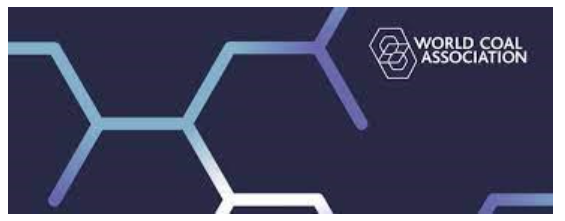
- The World Coal Association (WCA) is an international non-profit organization headquartered in London, UK, established to advocate for the global coal industry.
- Formerly known as the World Coal Institute (WCI), it rebranded in November 2010.
- The WCA engages in lobbying efforts, conducts workshops, and disseminates coal-related information to international decision-makers involved in energy and environmental policy.
- It actively contributes to discussions on global energy issues and participates in forums such as the United Nations Commission on Sustainable Development, the UN Framework Convention on Climate Change, and the International Energy Agency (IEA) Working Party on Fossil Fuels.
- Additionally, the WCA is involved in the promotion of clean coal technologies and is a participant in the Carbon Sequestration Leadership Forum.
Source: TH
International Film Festival of India (IFFI)
In News: The nine-day festival was inaugurated by the Union Minister of Information and Broadcasting, Youth Affairs, and Sports, and declared an enhanced incentive for foreign film productions within the country.
About IFFI

- Established in 1952, the largest state-backed international film festival in India, the event is a collaborative effort involving the Union Ministry of Information and Broadcasting, the Directorate of Film Festivals, and the Government of Goa.
- Held annually in Goa, it serves as a unified platform for global cinemas to showcase the brilliance of film art.
- The festival's objectives include fostering awareness, understanding, and appreciation of diverse film cultures, considering their social and cultural contexts.
- Moreover, it aims to cultivate friendship and cooperation among people worldwide.
Source: TH
The Employment Conundrum: Unemployment in India
In News: Examining the unique experiences of Germany, Japan, and South Korea will provide insight into the circumstances that influenced the recent suggestion for Indians to work 70 hours per week.
Unemployment Scenario in India
- The unemployment ratio is the proportion of unemployed individuals within the labour force.
- In the latest data, the unemployment rate stood at 6.6% for men and 9.4% for women, reflecting a change from 9.3% and 11.6% in the July-September 2021 period.
Types of Unemployment in India
- Disguised Unemployment
- Definition: More individuals are employed than necessary.
- Commonly observed in agricultural and unorganized sectors in India.
- Seasonal Unemployment
- Definition: Occurs during specific seasons of the year.
- Example: Agricultural laborers in India often face a lack of work throughout the year.
- Structural Unemployment
- Definition: Arises from a mismatch between available jobs and workers' skills.
- Cause: Lack of necessary skills and inadequate education hinder job placement.
- Cyclical Unemployment
- Definition: Results from economic cycles, with unemployment increasing during recessions and decreasing during growth.
- Occurrence: More prevalent in capitalist economies.
- Technological Unemployment
- Definition: Job loss due to technological advancements.
- Data: In 2016, the World Bank predicted a 69% year-on-year proportion of jobs threatened by automation in India.
- Frictional Unemployment
- Also known as Search Unemployment.
- Refers to the time delay between jobs during a job search or job transition.
- Inevitable time lag causes frictional unemployment.
- Vulnerable Employment
- Definition: Involves informal work without proper contracts and legal protection.
- Challenge: Records of their work are not maintained, contributing to the classification of these individuals as 'unemployed.'
- Prominent in India's employment landscape.
Factors contributing to unemployment in India
- Impact of Caste System
- Presence of caste-based restrictions on certain jobs in specific regions.
- Joint Family Dynamics
- In large joint families with significant business interests, some individuals may not actively contribute to work, relying on the family's combined income.
- Population Growth Challenges
- Persistent population growth poses a significant challenge to managing unemployment in India.
- Agricultural Dependence
- Nearly half of India's workforce relies on agriculture, which remains underdeveloped and provides seasonal employment.
- Decline in Cottage Industries
- Industrial development adversely affected cottage and small industries, leading to a decline in production and unemployment among artisans.
- Labour Immobility
- Limited labour mobility due to familial ties, language barriers, religious considerations, and climatic preferences.
- Educational System Deficiencies
- Mismatch between specialized job requirements and the lack of corresponding training in India's education system.
- Inability to meet the demands of specialized jobs results in unemployment for those lacking the required skills.
Government Initiatives to Address Unemployment
- Support for Marginalized Individuals for Livelihood and Enterprise (SMILE)
- Aimed at providing support and opportunities for livelihood and entrepreneurship to marginalized individuals.
- PM-DAKSH (Pradhan Mantri Dakshta Aur Kushalta Sampann Hitgrahi)
- Focuses on enhancing skills and promoting excellence to empower individuals for sustainable employment.
- Mahatma Gandhi National Rural Employment Guarantee Act (MGNREGA)
- Enacts a rural employment guarantee to provide livelihood security and generate employment opportunities in rural areas.
- Pradhan Mantri Kaushal Vikas Yojana (PMKVY)
- Aims to skill and upskill the Indian workforce to make them job-ready and enhance employability.
- Start Up India Scheme
- Encourages entrepreneurship and supports the growth of startup ventures, fostering job creation and economic development.
- National Career Service (NCS)
- Provides a platform for job seekers and employers to interact, facilitating career guidance, skill development, and job placement.
- Deen Dayal Upadhyaya Grameen Kaushalya Yojana (DDU-GKY)
- Focuses on rural youth development by providing skill training and placement for sustainable livelihoods.
- Pradhan Mantri Rojgar Protsahan Yojana (PMRPY)
- Encourages employers to generate new employment by contributing to the provident fund of eligible employees.
|
UPSC Previous Year Questions Prelims (2013) Q. Disguised unemployment generally means (a) large number of people remain unemployed Ans: (c) Exp:
|
Source: TH
Share the article
Edukemy’s Current Affairs Quiz is published with multiple choice questions for UPSC exams
MCQ
Get Latest Updates on Offers, Event dates, and free Mentorship sessions.

Get in touch with our Expert Academic Counsellors 👋
FAQs
UPSC Daily Current Affairs focuses on learning current events on a daily basis. An aspirant needs to study regular and updated information about current events, news, and relevant topics that are important for UPSC aspirants. It covers national and international affairs, government policies, socio-economic issues, science and technology advancements, and more.
UPSC Daily Current Affairs provides aspirants with a concise and comprehensive overview of the latest happenings and developments across various fields. It helps aspirants stay updated with current affairs and provides them with valuable insights and analysis, which are essential for answering questions in the UPSC examinations. It enhances their knowledge, analytical skills, and ability to connect current affairs with the UPSC syllabus.
UPSC Daily Current Affairs covers a wide range of topics, including politics, economics, science and technology, environment, social issues, governance, international relations, and more. It offers news summaries, in-depth analyses, editorials, opinion pieces, and relevant study materials. It also provides practice questions and quizzes to help aspirants test their understanding of current affairs.
Edukemy's UPSC Daily Current Affairs can be accessed through:
- UPSC Daily Current Affairs can be accessed through Current Affairs tab at the top of the Main Page of Edukemy.
- Edukemy Mobile app: The Daily Current Affairs can also be access through Edukemy Mobile App.
- Social media: Follow Edukemy’s official social media accounts or pages that provide UPSC Daily Current Affairs updates, including Facebook, Twitter, or Telegram channels.

